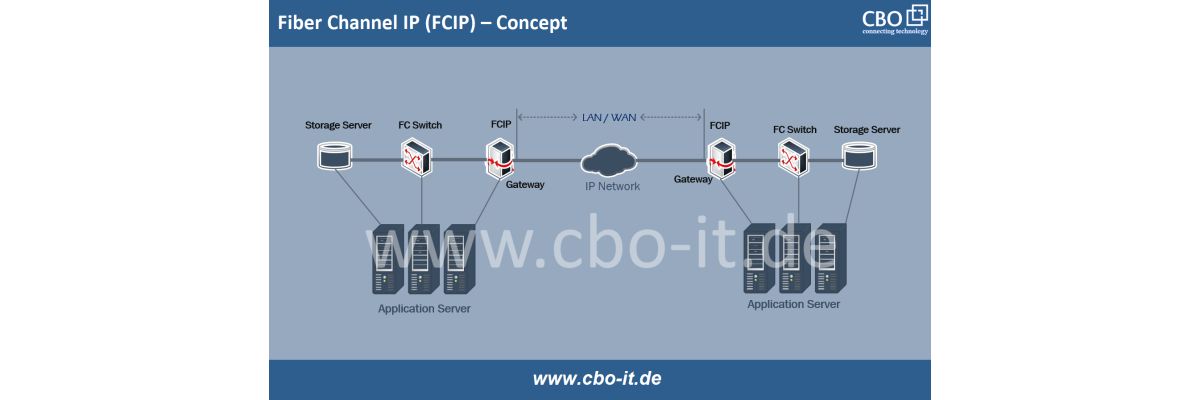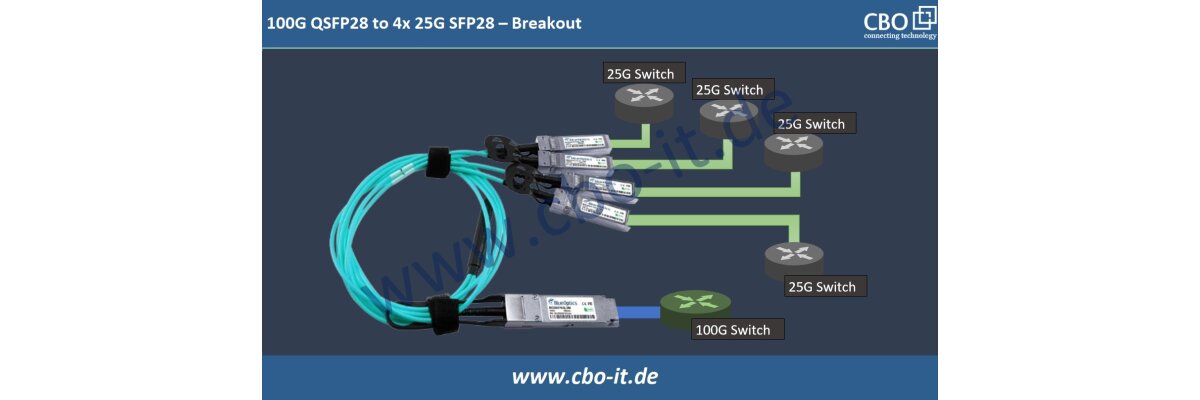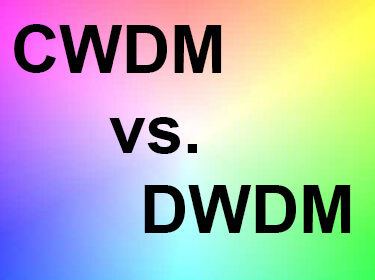
Was ist DWDM?
DWDM ist die Abkürzung für Dense Wavelength Division Multiplexing. DWDM Systeme für optische Übertragungen haben sich im Anschluss an die vorherige SONET/SDH Technologie durchgesetzt. SONET / SDH hat seine Grenzen in Bezug auf seine Ökosystem-Komponenten erreicht, um wettbewerbsfähige Preise bei Hochgeschwindigkeitsdatenübertragungen zu erzielen.
Die Grundeinheit für die Datenrate, die über ein solches System übertragen wurde, war OC3 oder STM-1, welche mit 155 Mbs überträgt. Die großmöglichste Datenrate wird in OC-768- oder STM-256-Netzen mit knapp 38,5 Gbit / s erreicht. Die Kombination von ersten verfügbaren Lasern und elektronischen Schaltungen ermöglichten Übertragungen auf Singlemodefasern mit 1310nm. Eine weitere Erhöhung der Bandbreite erfolge noch über das Zeitmultiplexing. Hiermit wurde das maximale Potential der Technik ausgereizt.
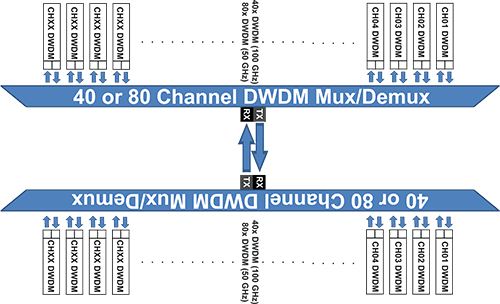
Die Entwicklung von WDM
Verschiedene WDM Technologien haben die Art wie Datenströme in die Glasfaser gesendet werden komplett geändert. Die Weiterentwicklung optoelektronischer Komponenten erlaubt es verschiedene Wellenlängen auf einer Singlemode Glasfaser zu übertragen. Dies führt zu einer drastischen Erhöhung der verfügbaren Bandbreite. Durch das Wellenlängen Multiplexing ist es möglich verschieden Datenströme mit jeweils 2.5Gb/s, 10Gb/s, 40Gb/s oder 100Gb/s zu übertragen.
Alle Komponenten die in DWDM Systemen zum Einsatz kommen benötigen eine sehr hohe Präzision auf Grund des geringen Kanalabstands. Dies führt zu insgesamt höheren Kosten der Hardwarekomponenten. Aus diesem Grund wurde noch die CWDM – Coarse Wavenlength Division Multiplexing Technik definiert („Grobes Wellenlängenmultiplexing“), welche eine günstigere Alternative zu DWDM Systemen darstellt. In der Regel werden diese Systeme auf kürzeren Distanzen eingesetzt. Des Weiteren können wesentlich weniger Wellenlängen übertragen werden.

CWDM / DWDM - Die Unterschiede
1. Das DWDM Verfahren ist über Frequenzen standardisiert. Das ITU-T G.694.1 Frequenz Gitter adressiert jeden Übertragungskanal. Diese Frequenzen liegen “dichter” und viel näher beieinander als es bei CWDM der Fall ist. CWDM nutzt Wellenlängen zur Unterteilung. Das CWDM Wellenlängengitter ist von der ITU standardisiert (ITU-T G.694.2).
2. Wenn man CWDM und DWDM Signale analysiert und miteinander vergleicht, kann man größere Zwischenräume zwischen den Wellenlängen bei CWDM feststellen. Dies erlaubt eine größere Toleranz in der Technik. Das Multiplexen und Demultiplexen der Kanäle kann bei der CWDM Technik mit wesentlich günstigeren Komponenten realisiert werden als in DWDM Systemen. In DWDM Systemen werden aufgrund der sehr geringen Kanalabstände wesentlich mehr Komponenten benötigt: Präzisionsfilter, gekühlte Laser und Dispersionskompensatoren sind nur einige Komponenten. Der „Drift " von einem sehr schmalen Frequenzfenster in der Größenordnung von einigen GHz, schafft eine Leistungsverschlechterung, die sehr anspruchsvoll ausgeglichen werden muss.
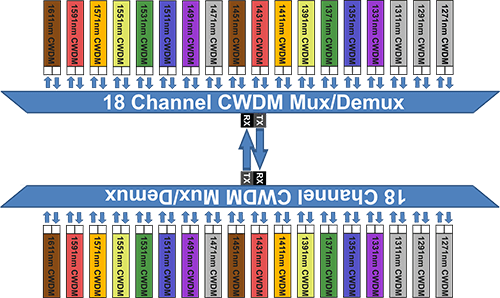
3. DWDM Systeme können in Verbindung mit erbiumdotierten Faserverstärkern oder Ramanverstärkern Distanzen von mehreren tausend Kilometern auf Singlemode Fasern erreichen. CWDM Systeme können Distanzen von mehreren 10 Kilometern erreichen. Hierfür werden keine weiteren Verstärker benötigt. Dies kann eine intressante Variante für kleinere Metro Carrier sein, die später noch wachsen möchten.
4. OSC - Optical Supervision Channel ist eine Systemkomponente, die nur für DWDM-Implementierungen spezifisch ist. Hier wird ein separater optischer Kanal definiert. Dies ist ein Datenkanal, der gewöhnlich eine zusätzliche Wellenlänge außerhalb des EDFA-Verstärkungsbandes (bei 1.510 nm, 1.620 nm, 1.310 nm oder anderer proprietärer Wellenlänge) verwendet. Das OSC liefert Informationen über das optische DWDM Signal sowie die Remote Bedingungen am optischen Terminal oder EDFA-Standort. Es wird auch in der Regel für Remote-Software-Upgrades und Netzwerk-Management-Informationen verwendet.
Zusammenfassend:
|
CWDM |
DWDM |
|
Definiert durch Wellenlängen |
Definiert durch Frequenzen |
|
Kurze Distanzen |
Long-haul Übertragung |
|
Nutzt großes Frequenzband |
Nutzt kleines Frequenzband |
|
Wellenlängen weit auseinander |
Wellenlängen nah bei einander |
|
Leichte Verschiebung der Wellenlänge möglich |
Präzisionslaser erforderlich, um Kanäle genau ein zu halten |
|
Bricht das Spektrum in große Stücke |
Teilt das Spektrum in kleine Stücke |
|
Das Lichtsignal wird nicht verstärkt |
Das Lichtsignal wird optional verstärkt |
|
Niedriger Einstiegspreis |
Hohe Kosten auch bei kleinem Start |
 English
English
 Deutsch
Deutsch
 Espaniol
Espaniol






